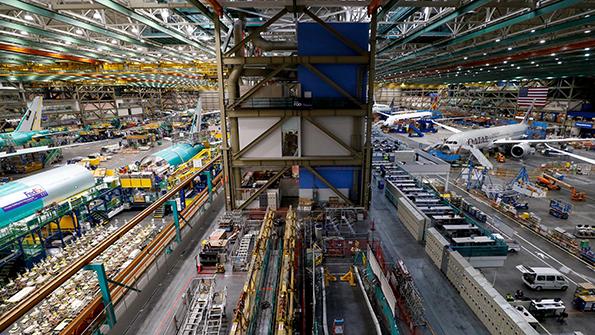
The civil aviation recovery has just entered its third year, shrugging off concerns about a global economic downturn. Flight activity is approaching 90% of 2019 levels, with China the last missing piece. The jetliner book-to-bill ratio has been positive since 2021—that is, there have been more orders than deliveries for several years now, so backlogs, already large, are growing again. Yet this recovery is different from every other one I have seen in 35 years of following the industry.
From OEMs to midtier suppliers, everyone across the industry seems to be on edge. While markets are strong, deliveries are quite sluggish, considering where we are in the cycle. For the first time in many decades, the enduring problem is with supply, not demand. This problem may prove to be long-lasting, with long-term consequences.
Deliveries began slowly recovering in 2021. The second year of this recovery should have been great, but jetliner deliveries grew just 19.1% by value in 2022. Looking only at manufactured aircraft (i.e., excluding deliveries of Boeing 737 MAXs and Boeing 787s already built), this 2022 figure falls to just 11.3% relative to 2021.
For comparison, in the second year of the last recovery, 2006, jetliner deliveries grew 25.5% over 2005. And in 1997 and 1998, two years remembered for serious manufacturing problems at Boeing, deliveries grew 35.4% (1997 over 1996) and 34.8% (1998 over 1997).
Today, deliveries are hobbled by production shortfalls at many levels of the supply chain, but particularly with engines, castings, forgings and other key components. This is not just a jetliner problem—business jet output has been muted relative to demand. And despite record world defense spending (hitting $2 trillion for the first time in 2021, with further growth since), military aviation output actually fell slightly last year, largely due to disappointing fighter output.
There are many reasons for this disappointing jetliner production ramp, but four stand out as most serious. The first is the severity of the drop and the difficult aftermath. Typically, a cyclical downturn in this industry involves a 30-35% decline, spread over several years. But in 2020, jetliner output fell by a remarkable 46%. This came on top of the 737 MAX line shutdown. The result was a financially hobbled supply chain scrambling to rehire laid-off workers, secure working capital and resume purchasing.
The second reason is the unprecedented bifurcation between single- and twin-aisle jets. As I wrote in Aviation Daily last spring, the demand upturn is confined to single-aisle jets. Production of new twin-aisles actually fell last year (see table), which led to a mismatch between demand and production capacity. To cite an obvious example, Rolls-Royce, with its heavy exposure to twin-aisles, has excess production capacity. GE/CFM and Pratt & Whitney do not.
The third reason is that civil aviation has been, and will continue to be, crowded out by everything else. Usually, civil aviation leads the way in an economic recovery. But the COVID-19 economy has experienced an unexpectedly strong consumer goods recovery, with persistent demand for everything from cars to home electronics to housing. This created strong demand for labor and other resources, with predictable wage and price inflation. Meanwhile, since defense spending has kept growing, and generally provided the best payment terms for contractors, aerospace suppliers likely will continue to prioritize defense contractors over civil aviation.
The fourth reason is the most concerning in the long run. Mohamed A. El-Erian, chief economic advisor at Allianz, commented in a Foreign Affairs article last year that the world economy is transitioning from decades of being defined by inadequate demand to being defined by inadequate supply. Aviation is scrambling for labor and materials, but so is every other sector of the economy.
In other words, the production delays and inflated costs associated with this slow civil aviation recovery could morph into a long-term structural problem. Recovering from the current supply chain delays, inflated costs and final production slips might take more than just 18-24 months.
